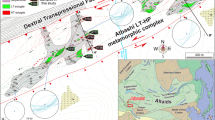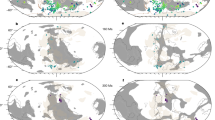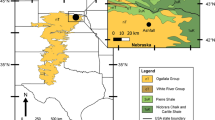Abstract
So-called ‘tectonic’ melanges in many parts of the world seem to contain a disproportionately high number of fossils relative to the enclosing rocks. This is particularly true of mélanges in ‘greywacke type’ terrains, in particular the Esk Head Mélange1 in the otherwise sparsely fossiliferous Torlesse Zone of the Alpine Assemblage2 in the New Zealand Geosyncline, the mélange belts of the Franciscan Assemblage of California (M. C. Blake, jun., personal communication), and the Liptrap Formation of southern Victoria, Australia. In addition, the fossils contained in mélange belts commonly contain shallow water forms, and in extreme cases even terrestrial fossils (D. L. Jones, personal communication).
This is a preview of subscription content, access via your institution
Access options
Subscribe to this journal
Receive 51 print issues and online access
$199.00 per year
only $3.90 per issue
Buy this article
- Purchase on SpringerLink
- Instant access to full article PDF
Prices may be subject to local taxes which are calculated during checkout
Similar content being viewed by others
References
Bradshaw, J. D., J. R. Soc. N.Z., 3, 161 (1973).
Carter, R. M., Norris, R. J., Landis, C. A., and Bishop, D. G., J. R. Soc. N.Z., 4, 5 (1974).
Berkland, J. O., Raymond, L. A., Kramer, J. C., Moores, E. M., and O'Day, M., Bull. Am. Ass. Petrol. Geol., 56, 2295 (1972).
Author information
Authors and Affiliations
Rights and permissions
About this article
Cite this article
BISHOP, D., BRADSHAW, J. & O'CONNOR, B. Fossils in mélanges. Nature 249, 242 (1974). https://doi.org/10.1038/249242a0
Received:
Revised:
Issue date:
DOI: https://doi.org/10.1038/249242a0



